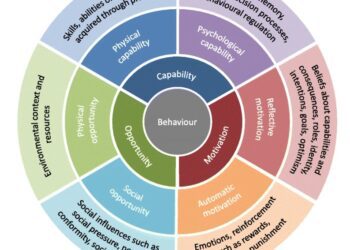Leadership matters: safety as a value?

The previous issue of RISKworld focused on the things that leaders need to do right to assure major hazard safety. Whilst a list of things to do can be insightful for a motivated leader, the list simply adds to things that a leader already has to do, whether commercial, technical, human resources, etc. For example, traditional safety leadership tends to focus on what to do rather than addressing what may be considered to be ‘deeper drivers’ of safety leadership, such as holding safety as a value.
BELIEFS AND PERSONAL VALUES

One ‘deeper driver’, that more enlightened training in safety leadership explores, is the issue of personal values of leaders towards safety (including health and the environment). In order to understand personal values, it is important to first define what beliefs are. A belief is an idea that
a person holds as being true. A person can base a belief upon provable absolutes (e.g. mathematics), life experiences, the acceptance of cultural and societal norms (e.g. religion) or what other people say (e.g. peers, teachers or mentors).
Once a person accepts a belief as truth, they are willing to defend it. For example, the leader who truly believes that all incidents are preventable and the organisation’s goal of zero harm is achievable, is likely to commit fully to that goal. The leader who does not believe that all incidents are preventable is unlikely to be as committed (see Box 1). As Henry Ford once said, “Whether you think you can or you think you can’t, you’re probably right.”
Values are stable, long-lasting core beliefs about what is important to a person. They reflect a person’s sense of right and wrong. They reflect who we are and why we do what we do. They guide how we make choices and the order we do things. A belief will evolve into a value when the person’s commitment to it develops and they see it as being important. From these values individual attitudes are formed, which in turn direct the person’s behaviour. For example, if you hold safety as a strong personal value and you are leaving work in a rush to get home in time to watch your favourite sports team but notice one of your car tyres is somewhat underinflated, you would still take the time to inflate the tyre even if it means missing the start of the game.
YOUR PERSONAL VALUES
It follows that you should be able to articulate clearly your values in order to be rational, responsible and consistent in your decision-making. Leave your values ambiguous and you’ll constantly wonder how you keep getting into so many messes. An insightful exercise for any leader is to write down the ten values that are most important to them.
Running this exercise during safety leadership training reveals some commonly held values, such as happiness, achievement, family, integrity and faith. Most people will also choose health. Some people will hold a value around environmental responsibility. But even when safety is included on a list of values to select from, it is surprisingly unusual for someone to pick it.
At first glance this might suggest that safety is not that important to leaders. However, safety is strongly related to other values often chosen by leaders. For example, virtually everyone will hold family as a top personal value; but what could be more important to a family than the safety of everyone in it? Indeed, one way for a leader to build meaningful relationships with others is to relate safety to values such as family and health by telling pertinent personal stories and using impactful language, e.g. “everyone goes home safe, everyday, everywhere”.
SAFETY AS A VALUE RATHER THAN A PRIORITY
Many organisations hold safety as a high priority, publically stating that “Safety is our number one priority”. But priorities shift around depending on current circumstances. Values are more constant than priorities and are rarely compromised. It makes sense for leaders to talk about safety as a value rather than a priority because personal values guide our behaviour. When our actions are inconsistent with our values, we willingly adjust our behaviour to align with them. Simply pointing out the inconsistency can be sufficient to result in a positive change.
CONCLUSION
It is generally accepted today that treating safety as a value makes sense – it is an ethic that guides everything we do, rather than a top priority on a par with production. Because leaders create the safety culture and a culture is simply a set of common values, if leaders as individuals believe in safety as a value then the organisation’s safety culture will be strong…and a vision of zero harm becomes achievable.
This article first appeared in RISKworld Issue 24







